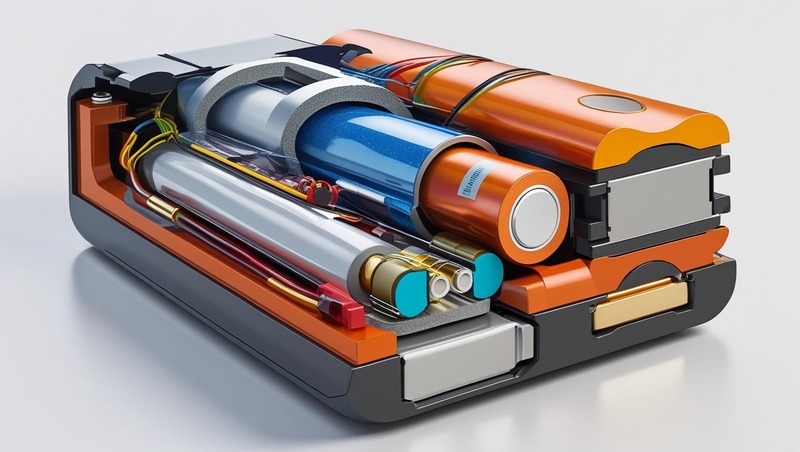Artificial Intelligence (AI) is transforming the lithium-ion battery industry, ushering in a new era of efficiency, performance, and sustainability. As the demand for energy storage systems continues to rise due to the rapid adoption of electric vehicles (EVs), renewable energy integration, and portable electronics, AI is playing a crucial role in optimizing battery design, manufacturing, management, and recycling processes.
One of the most significant impacts of AI in the lithium-ion battery industry is in the area of battery design and materials discovery. Traditional methods of researching and testing new battery chemistries are time-consuming and expensive. AI accelerates this process by analyzing massive datasets to identify promising materials combinations, predict performance characteristics, and simulate battery behavior under various conditions. Machine learning models can quickly assess the electrochemical properties of different material configurations, helping researchers discover novel anode and cathode materials with higher energy densities and longer lifespans.
Download PDF Brochure @ https://www.marketsandmarkets.com/pdfdownloadNew.asp?id=49714593

In manufacturing, AI-powered systems are enhancing quality control and production efficiency. Smart sensors and AI-driven analytics monitor various parameters during the production of lithium-ion cells, including temperature, pressure, and humidity levels. These systems can detect defects in real time, predict maintenance needs for machinery, and optimize manufacturing lines to reduce waste and energy consumption. This leads to improved consistency, lower production costs, and faster time-to-market for battery products.
Battery management systems (BMS) are another critical area where AI is making a profound difference. AI algorithms enable advanced monitoring and predictive analytics for real-time battery performance evaluation. By learning from usage patterns and environmental data, AI models can accurately estimate the state of charge (SoC), state of health (SoH), and remaining useful life (RUL) of batteries. This not only ensures the safety and reliability of battery-powered devices but also extends battery life and enhances user experience. In EVs, AI-based BMS helps in optimizing driving range and charging cycles, which are essential for customer satisfaction and operational efficiency.
AI is also revolutionizing the battery recycling process, addressing one of the major environmental challenges of the lithium-ion battery lifecycle. By leveraging AI and computer vision technologies, automated sorting systems can identify and separate battery components more accurately and efficiently. Moreover, machine learning models can optimize the recovery of valuable materials like lithium, cobalt, and nickel, making the recycling process more economically viable and environmentally friendly.
Looking ahead, AI is expected to play an even more central role in the digitalization of the battery value chain. From virtual prototyping and automated production to intelligent supply chain management and end-of-life processing, AI offers endless opportunities to innovate and improve. As the lithium-ion battery market continues to expand, the integration of AI will be vital in meeting global energy needs while promoting sustainability and circular economy principles.
Frequently Asked Questions (FAQs) on the Lithium-ion Battery Market
- What is the current size and projected growth of the global Lithium-ion Battery Market?
The global lithium-ion battery market is experiencing robust growth, driven primarily by the burgeoning electric vehicle (EV) sector and renewable energy integration. The global lithium-ion battery market is projected to grow from USD 194.66 billion in 2025 to USD 426.37 billion by 2033, at a CAGR of 10.3%, fueled by increasing demand for sustainable energy solutions and portable electronic devices. - What are the primary applications driving the demand for Lithium-ion Batteries? The demand for lithium-ion batteries is predominantly driven by Electric Vehicles (EVs), including passenger cars, commercial vehicles, and two/three-wheelers, representing the largest and fastest-growing segment, alongside significant demand from consumer electronics like smartphones and laptops, and crucial applications in grid-scale energy storage systems (GESS) supporting renewable energy integration, as well as various industrial applications such as power tools and robotics.
- What key factors are fueling the growth of the Lithium-ion Battery Market? Several critical factors are propelling market growth, including the rising adoption of electric vehicles due to government incentives and decreasing costs, the global shift towards renewable energy necessitating reliable energy storage, continuous technological advancements improving battery performance and safety, decreasing battery costs due to economies of scale, and supportive government policies promoting EV adoption and renewable energy infrastructure.
- What are the main challenges faced by the Lithium-ion Battery Market? Despite its growth, the market faces significant challenges such as volatility in the raw material supply chain for minerals like lithium and cobalt, geopolitical risks due to concentrated raw material extraction, ongoing safety concerns related to thermal runaway and fire, the need for scalable and cost-effective recycling infrastructure for end-of-life batteries, the expansion of charging infrastructure to support widespread EV adoption, and environmental concerns regarding the ecological footprint of mining operations.
- How is Artificial Intelligence (AI) impacting the Lithium-ion Battery Market? AI is a transformative force across the entire lithium-ion battery value chain, enabling accelerated material discovery by screening and predicting properties of new chemistries, optimizing manufacturing processes through AI-powered quality control and predictive maintenance, enhancing Battery Management Systems (BMS) for precise State of Health (SoH) and Remaining Useful Life (RUL) estimations, improving grid integration by optimizing energy dispatch for large-scale storage, and advancing battery recycling and second-life applications through intelligent sorting and assessment.
